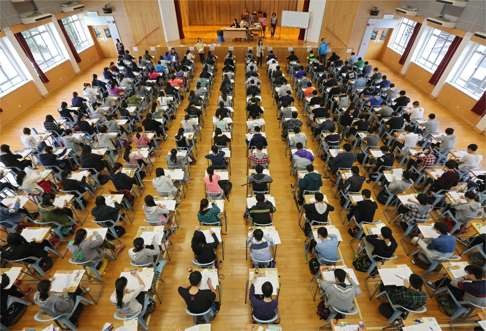
Don’t be too quick to blame school pressure for Hong Kong’s youth suicides
Paul Stapleton says while saddening, the recent spike in cases involving Hong Kong youth may in fact be a statistically random event, rather than part of any meaningful pattern
Hong Kong is presently experiencing some soul-searching following the recent spate of youth suicides. The media is full of discussions about the plight of our youth, providing reasons for these tragedies and lamenting the inadequate support that students appear to be getting. Pressure from the education system is often at the top of the list of reasons for the loss of life.
But other causes have been suggested, ranging from the clinical (a lack of counsellors in the city) to the cultural (the pressures of living in a highly competitive society).
No shortage of solutions have been proposed: make the school system less exam-oriented; provide courses in positive thinking to create healthier mindsets; increase the number of counsellors; identify and intervene early with those at risk of suicide; establish pledges not to commit suicide, and so on. As well meaning as these ways of tackling the problem are, realistically, we realise there are no quick and easy solutions.
Education chief gets earful over HK$5,000 payout per school to fight student suicides

I speak of the clustering illusion or, in plain language, how events can appear to occur in meaningful patterns or streaks, when in fact they are part of a naturally occurring random sequence. In other words, all of our soul-searching to find causes and solutions to these recent tragedies may be looking in the wrong direction.
Of course, attributing deeper causal meaning to seven suicides in nine days is completely understandable because it is so exceptional, especially when those suicides are among our precious youth. However, a closer look at suicide statistics and associated research studies paints a picture that is more complex than surface appearances would lead us to believe.
Blame game on student suicides misses the point: it’s elitism that piles on the pressure
The question remains, however, whether this recent spike is a random one, just like other tragic events such as plane crashes that sometimes occur hours or days apart, or whether our youth suicides really do represent a worrisome trend resulting from the usual blamed causes.

Release students from ‘cages’ to improve education, say Redefining Hong Kong panellists
Although reducing the loss of young precious lives to statistical anomalies may appear cruel beyond words, the fact is that among the hundreds of thousands of students in Hong Kong, the sudden spike of a few suicides may simply be a result of the clustering illusion, perhaps with copycat actions only adding to the tragedy.
In fact, Hong Kong’s overall suicide rate is slightly below the world average, which would indicate that if anything, local mental health, and measures to deal with diseases such as depression, are being handled reasonably effectively and are within the norm.
Whether the recent tragic events are part of an unfortunate, meaningful trend, or whether they are simply a statistical blip, it is only natural that we seek to explain the cause and look for solutions.
However, we should be aware of our natural cognitive biases that tend to quickly seek meaning and solutions when events happen in sequences that appear non-random.
Paul Stapleton is an associate professor at the Hong Kong Institute of Education

